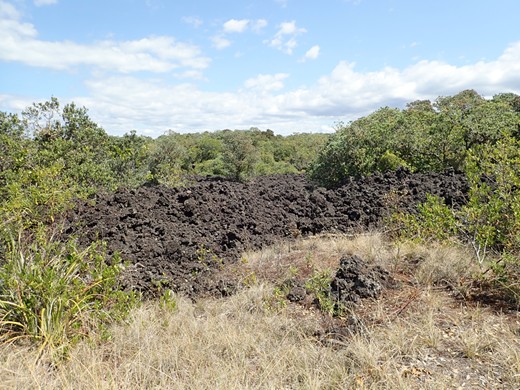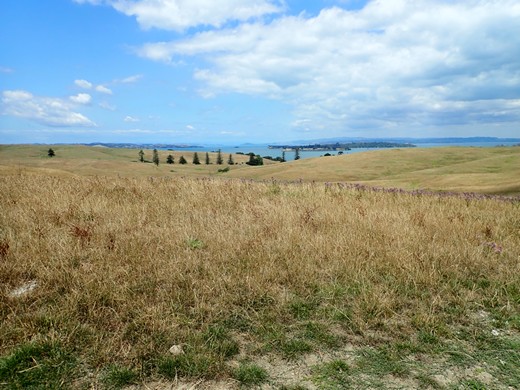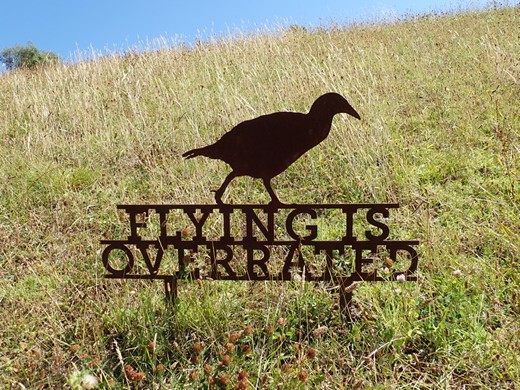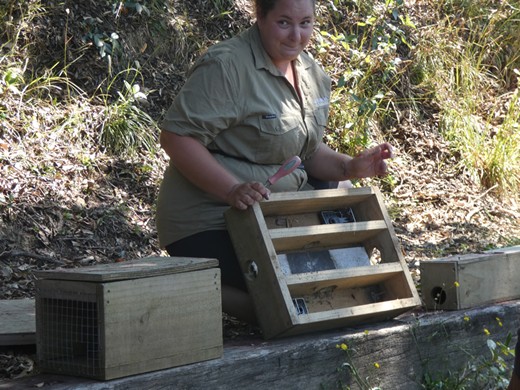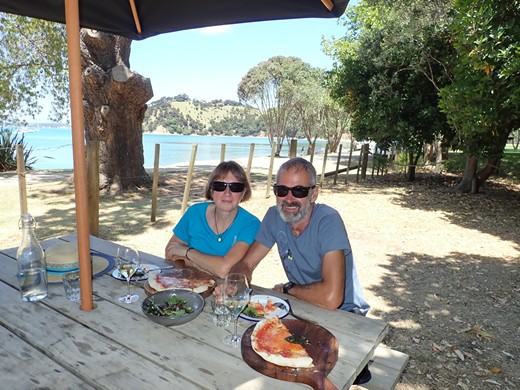Hauraki Gulf. Rangitoto, Motutapu, Rotoroa, Waiheke. 36:47.3S, 175:09.5E

|
With the engine now starting OK, food stocked up from New World (Waitrose equivalent) and spare parts bought which we hadn’t found in Whangarei, we left Auckland on Friday morning. The weather was fine but very little wind, what there was came from ahead so we motored all the way out of the harbour then once clear had a leisurely sail. We decided to keep the days short and island hop places we hadn’t explored before. First stop Rangitoto and Motutapu two contrasting islands joined by a causeway across the head of Islington Bay. Rangitoto is the youngest island in the Hauraki Gulf only about 600 yrs old it was formed by two eruptions and still has the look of a volcano. The lava fields are now covered in growth but only a small amount of development has taken place. We walked up to the summit on a hot dusty track, unfortunately the track to the lava tubes was closed so it was straight up and down with a quick look at the caldera and the views to Auckland.
Black lava fields make up the land of Rangitoto
Looking towards Auckland from the rim of the crater Motutapu is one of the oldest islands in the Hauraki Gulf, it is pest and predator free and recently farming on the island has ceased so it is covered in grassland with areas of natural bush which should encourage the return of the native birds. We did a longer walk here than on Rangitoto out to Emu Point and the bay which was one of the earliest European settlements on the island, the house is no longer here but there is an avenue of Norfolk Pines an a couple of large Date Palms.
Motutapu grasslands and the avenue of pines There are two islands in the gulf which have been used as addiction centres by The Salvation Army and Rotoroa is one of them. It is now a sanctuary for wildlife a tremendous amount of native trees have been planted here and endangered native species returned. We moved on to here on Sunday. Although it is nice to explore places on your own with such a history and with all the work being done here we decided to have a guided tour. The tour was with one of the rangers who live on the island and are in charge of the conservation work and the holiday cottages. The ferry comes here daily from Auckland during the summer, the passengers have to pass through a ‘decontamination area’ where their bags are checked and footwear cleaned before they are allowed to wander freely. Surprisingly we can just land on the beach.
The island is home to Weka, Takahe and Kiwi. Flightless native birds. The Takahe is one of the worlds rarest birds with only about 450 known of. Five are on Rotaroa, but they refused to come and have their photo taken.
To remain pest free traps are used for rats and possum if any are caught the island loses its pest free status for a period. The traps are a means of checking as much as controlling. Yesterday we moved on again, just two miles to Man of War Bay on Waiheke and had lunch out at the Vineyard visitors centre and restaurant.
Sent from Mail for Windows 10 |
